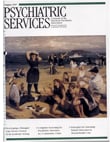Computerized screening for psychiatric disorders in an outpatient community mental health clinic
Abstract
OBJECTIVE: This study examined the validity and utility of two types of computer-administered versions of a screening interview, PRIME-MD (Primary Care Evaluation of Mental Disorders), in a mental health setting: one administered by desktop computer and one by computer using a touch-tone telephone and interactive voice response (IVR) technology. METHODS: Fifty-one outpatients at a community mental health clinic were given both IVR and desktop PRIME-MD and the Structured Clinical Interview for DSM-IV (SCID-IV), which was administered by a clinician, in a counterbalanced order. Diagnoses were also obtained from charts. RESULTS: Prevalence rates found by both computer interviews were similar to those obtained by the SCID-IV for the presence of any diagnosis, any affective disorder, and any anxiety disorder. Prevalence rates for specific diagnoses were also similar to those found by the SCID-IV except for dysthymia, obsessive-compulsive disorder, and panic disorder; the first two conditions were found to be more prevalent by the computer, and panic disorder was more prevalent by the SCID. Compared with the prevalence rates in the charts, the rates found by the computer were higher for anxiety disorders, particularly for obsessive-compulsive disorder and social phobia. Using the SCID-IV as the criterion, both computer-administered versions of PRIME-MD had high sensitivity, specificity, and positive predictive value for most diagnoses. No significant difference was found in how well patients liked each form of interview. CONCLUSIONS: Results support the validity and utility of both desktop and IVR PRIME-MD for gathering information from mental health patients about certain diagnoses.



